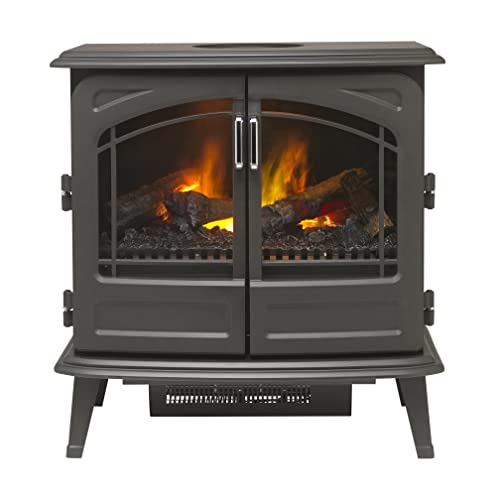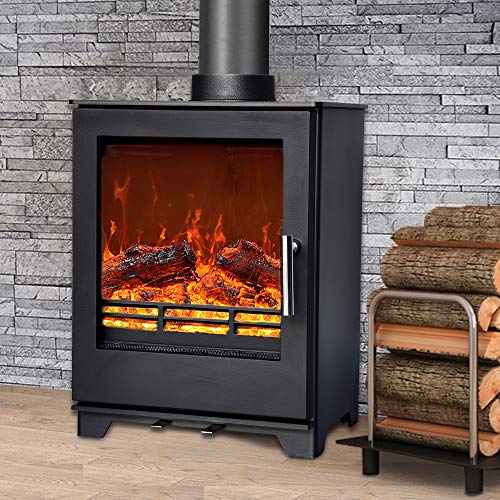EPA-Certified Wood Stoves May Not Meet Your Health and Safety Standards
 Many communities have offered financial incentives for replacing old wood stoves with EPA certified models that produce less pollution. However, Undark found that some of these modern stoves might not be up to EPA standards.
Many communities have offered financial incentives for replacing old wood stoves with EPA certified models that produce less pollution. However, Undark found that some of these modern stoves might not be up to EPA standards.
In a time of rising energy costs, many cities are looking to reduce wood burning stoves combustion, particularly in areas in which air quality is poor. Here are ten tips to improve indoor air quality and get more heat powered wood stove fan from every log.
Efficiency
Wood stoves are one of the most energy-efficient ways to heat your home. Modern EPA-certified wood stoves burn logs fast and produce less smoke than older models. This makes it possible to burn a higher percentage of the potential energy generated by your fireplace in a shorter amount of time and lower your heating costs by as much as 30 percent. If you use only well-seasoned wood the efficiency of wood stoves improves over the life of the stove.
Older wood stoves typically have efficiency of less than 50 percent. This means that carbon dioxide and smoke are released into the air, resulting in an evaporation of about half the energy potential of the fire. Modern stoves can achieve efficiency of 85 percent or greater, which is comparable to the efficiencies of oil and gas furnaces.
The higher efficiencies of wood stoves are achieved by controlling the air, fuel and combustion process. Wood stoves that control the airflow are able to slow down how fast the fire moves through the wood and allow the gas that is produced to remain hot and fully combust.
Modern wood stoves are able to reuse the byproducts of incomplete combustion to create a new fire which burns more efficiently. This process, called reburn, can boost the efficiency of wood stoves by up to 10 percent.
Wood is also carbon neutral and carbon neutral, which is an additional benefit. The trees absorb carbon dioxide from the air as they are growing and release oxygen in return when they are burned. Wood is also an eco-friendly resource, particularly if it is obtained from local woodlands that are managed in a way that encourages the growth of healthy trees.
Cleanliness
With 8.8 million households that use wood stoves in the United States, cleaning and maintenance are a crucial element of keeping your home warm. A dirty stove and flue pipe can pose a fire hazard and cause carbon monoxide poisoning. Clean chimneys, stoves and flue pipes are more efficient.
Cleaning the ashes is the most common task you can do when cleaning your wood stove. This should be done on a cool day, when the stove isn’t as hot, and you should wear gloves to protect yourself when handling the ashes. Choose a container made of metal that is big enough to hold all of the ashes, and then dump them outdoors away from anything that might be able to ignite. You can also incorporate the ashes to your compost to create a healthy addition to you garden.
When the ashes have been cleared of the stove, it is a good time to sweep the floor and sweep up any dust left behind. It is also a great idea to leave at least three feet space between your wood stove, and wood stove burning any other combustible objects like pillows or curtains. This will stop the spread of a fire and burning the objects.
For the inside of your stove, glass doors that are clean allow you to enjoy a view of the flames dancing and can help you tell when it’s time to begin a new fire. Ensure that you have a glass cleaner on hand to clean any tarred or smudged areas that could be present. Newspaper dipped into water and ash can be used to wash the glass if it’s extremely dirty. Be careful not to scratch the glass since scratches can weaken glass and cause it to shatter when the glass is heated.
Creosote buildup on the inside of your flue is a major cause of chimney fires. A few millimeters of creosote can cause a fire in a chimney. Clean the flue often particularly if burning soft or pine woods produces more creosote.
To prevent creosote vapors from entering your home, you should only burn dry and seasoned wood that has been split in half or smaller. Never burn artificial trash, logs or other items inside your wood stove.
Safety
Wood stoves are known to produce extremely toxic gases, such as carbon monoxide and particulates. These harmful gases can be found in the home and could have adverse health effects on older adults, children or those with respiratory conditions like asthma or COPD. The exposure to wood smoke over time can also cause heart disease and cause lung damage.
To reduce the risk of these issues, it is essential to follow proper wood stove burning practices. This includes making sure that the stove is functioning correctly and has sufficient heat output for the room size and design. Only dry, well-seasoned and dry woods are suitable for burning in the stove. The moisture content of the wood should be less than 20%. If the moisture content of the wood is higher the fire will burn more quickly and wood stove burning produce smoke that is smoky and has more creosote on the chimney vent pipe’s wall.
A well-drawn chimney is an additional essential safety feature. This can be accomplished by observing how much air flows into the firebox and through the chimney. Most modern stoves have several options to alter the flow of air and the owner’s manual contains procedures. The highest efficiency in heating can be achieved when air controls are properly operated.
The flue pipe and chimney should be free of fire-prone materials, like drapes, trash or paper. The wood stove fires are often caused by an insufficient clearance between combustibles wood-burning appliances as well as combustibles.
It is also important to keep children away from wood stoves while the flame is in progress or when the ashes are being removed. Kids are naturally curious and may want to touch the hot surfaces of a wood stove, or put their hands into the flame. Install a child-proof fence around the fireplace or use a fireplace screen. Additionally, it is important to regularly check the fireplace and wood stove for signs of wear and tear.
Lastly, it is important to have your stove and chimney professionally inspected once per year for creosote accumulation, bird nests and other issues that can impact the safety of your chimney or stove. This will help avoid fires, health hazards and reduce the need for carbon monoxide remediation services.
Maintenance
While wood stoves are an excellent method of saving money on home heating, they do require some additional maintenance. If you don’t take care of the required maintenance on your wood stove, it can cause a fire that escapes the flue, a dangerous chimney fire, or even an unintentional house fire. In addition to cleaning the chimney and cleaning the stove, you must to sweep and clean the surfaces in the stove and flue. Keep a fire extinguisher in the counter and test it frequently. It is also recommended to install smoke detectors around the house particularly in the room with the stove.
As a rule, you should clean your chimney and stove at least once a year. The schedule of cleaning should be altered according to how often the stove is used. It may be necessary to clean it more often in winter. Only use dry and seasoned wood to burn in the stove. It is recommended to avoid using a lot of kerosene or oil for beginning the fire, because these fuels have different burning patterns and create toxic gases that can be very harmful to your health.
In the course of your regular cleaning and maintenance, be sure to inspect the gaskets of your doors. They are typically made of braided rope-like material that can degrade with repeated closing and opening. If you find that the gasket is not tight and you need to replace it, buy a gasket made of fiberglass as well as some gasket cement to fix it. The hinges of these doors need to also be checked.
It is important to inspect flues and chimneys to ensure that they are free of obstructions and creosote. During the inspection, check for cracks, and other indications of damage in the chimney lining. Stovepipes need to be checked too, and any dents or gaps should be repaired.
 If you have a glass door for your wood stove, it is important to keep this clean. This can be accomplished easily by using a mixture of water and ammonia. A rag or sponge should be saturated with the solution, then wiped over the surface of the glass until it is completely clean. It is possible to leave the solution for a couple of minutes before wiping it over again.
If you have a glass door for your wood stove, it is important to keep this clean. This can be accomplished easily by using a mixture of water and ammonia. A rag or sponge should be saturated with the solution, then wiped over the surface of the glass until it is completely clean. It is possible to leave the solution for a couple of minutes before wiping it over again.
